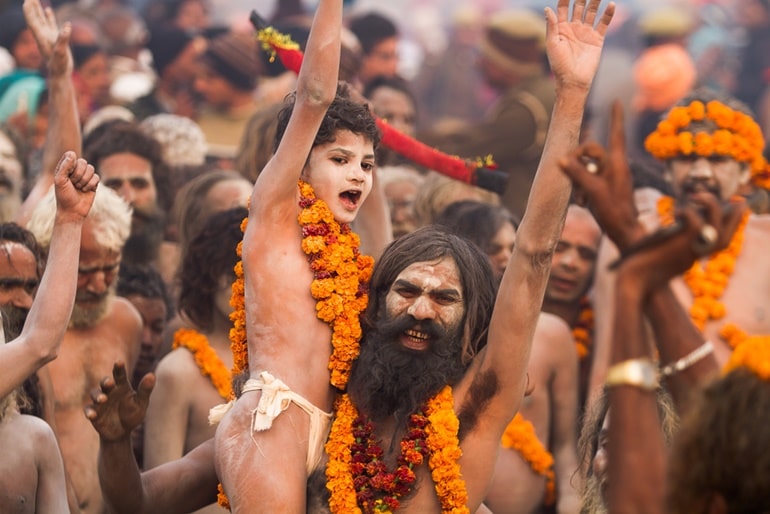A religious festival celebrated by people across the nation – Kumbh Mela as we say! The festival is lavishly celebrated four times in a time period of twelve years. Four pilgrim site of Kumbh Ka Mela is, Ujjain, Haridwar, Allahabad, and Nashik marks the destination. All the devotees can be a part of the grand celebration of the festival. Four Kumbh Mela places and four rivers namely the Ganga, Shipra, Godavari and the fusion of Ganga, Yamuna, and Sarasvati. The place of the event is based on the position of the Moon, Sun, and Jupiter. Ardh Kumbh Mela is held at Prayag(Allahabad) and Haridwar. Millions of devotees visit the place to enthrall themselves. Devotees could be anyone. A sadhu or a hermit or even the tech guru. Kumbh Mela is for all. Ardh Kumbh Mela held once in 6 years and Maha Kumbh Mela held in 144 years.
Maha Kumbh Mela History

The history of Maha Kumbh Mela dates back to the time 8th century. A philosopher named Shankara used to gather many intellectuals to indulge in a discussion.
As per Hindu mythology, once Devtas and demons were fighting over an Amrit pot which was the elixir of milky ocean churning. While they were doing this, drops of the Amrit fell at four places turning their water holy. Now, these four Kumbh Mela places are Ujjain, Haridwar, Allahabad, and Nashik. It is believed that those four rivers where the Amrit fell turned back into a nectar. Now, all the four have a holy significance. Plenty of devotees visit these Kumbh Ka Mela place around the year to dive in the holy waters. The essence of auspiciousness, purity, and immortality. The word “Kumbh” in Kumbh Ka Mela is basically the mystic elixir pot. The entire story is etched in the Puranas. Vedas speak about the immortal nectar pot.
Kumbh Mela Story
While the Kumbh Mela story is known to all. Purana tells the take to abhor the nectar pot if immortality. Devtas and the Asuras upon an agreement decided to churn the pot and divide half. All met near the shore to churn the river. The Vasuki used as a rope to churn the river and the Mandara mountain the rod.
As the churning began, initially a poison was formed which Lord Shiva drank. As it continued, the mountain began to sink and on this Lord Vishnu took the avatar of a tortoise to support the mountain. After a series of obstacles and 1000 years of struggle, the immortal pot was ready. Now, the Devtas knew that demons have I’ll intent so they took the pot and ran away. Upon seeing this, the demons chased them and finally after 12 days found them. Fights started and in the attempt to get hold of the pot, drops from them fell in four rivers. These are now the holy sites to organize the Kumbh Ka Mela.
Ardh Kumbh Mela
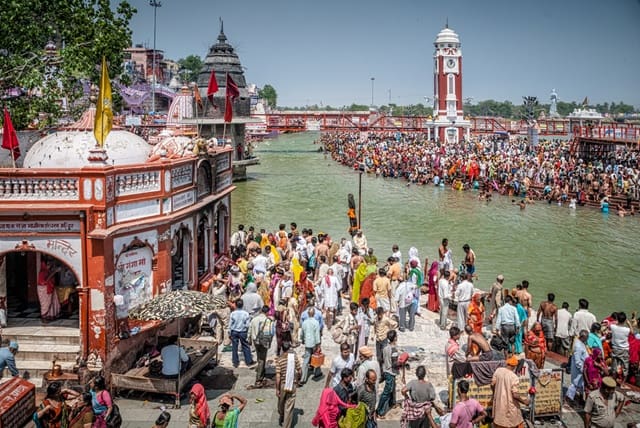
One of the most authentic gatherings that take place once in six years at places that attained the mythic drop of the elixir pot of nectar. Festival defines the pot (Kumbh) gathering (Mela). One of the most beautiful Hindu festival. People from all religions and all caste, irrespective of whether they are rich or poor attend the Ardh Kumbh Mela. Organized in Haridwar and Allahabad, Ardh Kumbh Mela witnessed people dip in the holy waters to induce auspiciousness of the same. It is believed that people who dive in the holy water attain divinity.
Maha Kumbh Mela Places
1. Allahabad Kumbh Mela
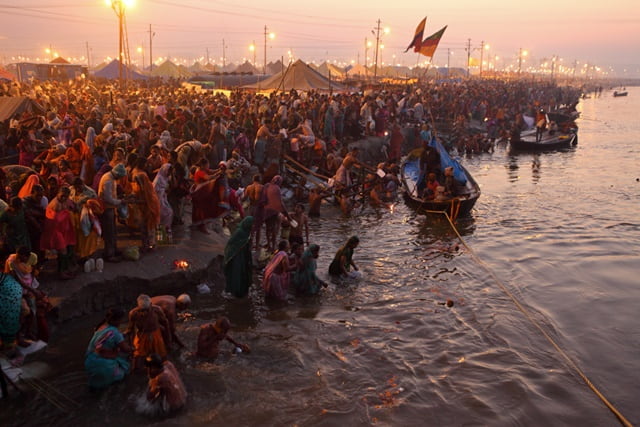
Allahabad is also known as Prayag, Allahabad is the holy pilgrim site where the Maha Kumbh Mela is organized. The place has its own significance as Lord Brahma gave his first sacrifice in Allahabad after the earth was created. The city is among the four places where the Amrit fell while the Devas and Asuras were fighting over the nectar pot. The Mela is at the fusion of Ganges, Saraswati and Yamuna river. The time when Taurus has Jupiter and Capricorn has sun and moon, the Mela takes places. A huge gathering where devotees dive in the water to attain divinity.
Read More: Places To Visit In Vrindavan: Krishna Bhumi Vrindavan Temple
2. Nashik Kumbh Mela
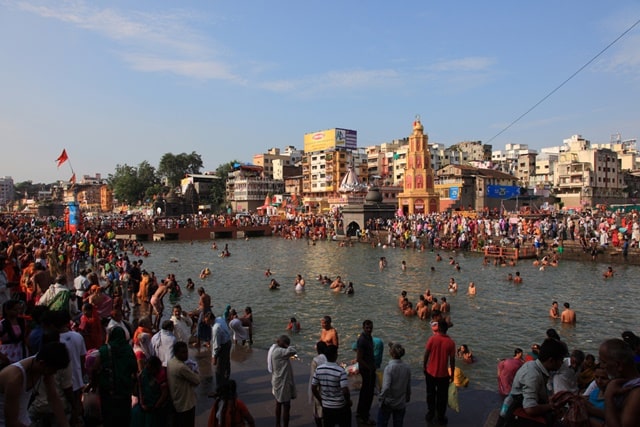
Nasik city is on the banks of river Godavari, the place has plenty of religious and cultural importance for the Hindus. The celebration of the Kumbh Ka Mela add more grace to the place and is also referred to as Nashik Trimbakeshwar Simhastha. The Kumbh Ka Mela is held when the Leo has Jupiter or all three, sun, moon and Jupiter are in a lunar conjunction in cancer. Devotees believe that diving in the holy waters of the river help them attain moksha and also get rid of their sins.
3. Haridwar Kumbh Mela
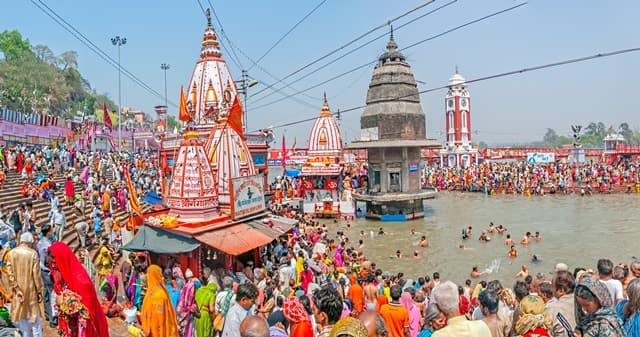
Undoubtedly, Haridwar is a place of Lord Vishnu and also a holy site for all the Hindus. The presence of river Ganga boosts the importance of the place. The place holds the largest fair in the country, the Kumbh Mela after every twelve years and the Ardh Kumbh Mela after every six years. Millions of devotees visit hardware and hit the rivers to take a holy dip. The time when aeries have sun and Aquarius has Jupiter, the Mela is held in Haridwar. The belief here to remains the same. Get rid of sins and attain moksha.
Read More: Places To Visit In Haridwar Tour: Haridwar Kumbh Mela
4. Ujjain Kumbh Mela
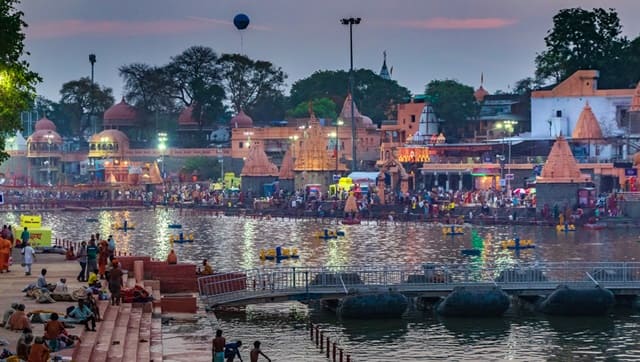
And the last on the banks of Shipra river. Ujjain is the temple city am is primarily known as the town of Mahakaleshwar. The time when Leo has Jupiter, a Kumbh Ka Mela is held in Ujjain to add to its glory. Once I every twelve years, devotees gather at the shore of the river and bathe in the holy waters. The pristine water is believed to help in attaining moksha and enlighten the soul.
So, plan your next holy trip to one of these Kumbh Mela places and mesmerize yourself.
Read More: Places To Visit In India During The Month of Savan

